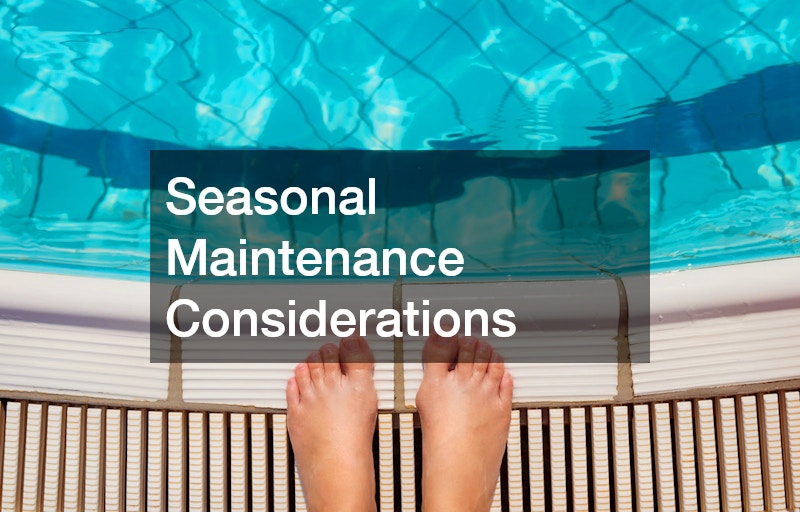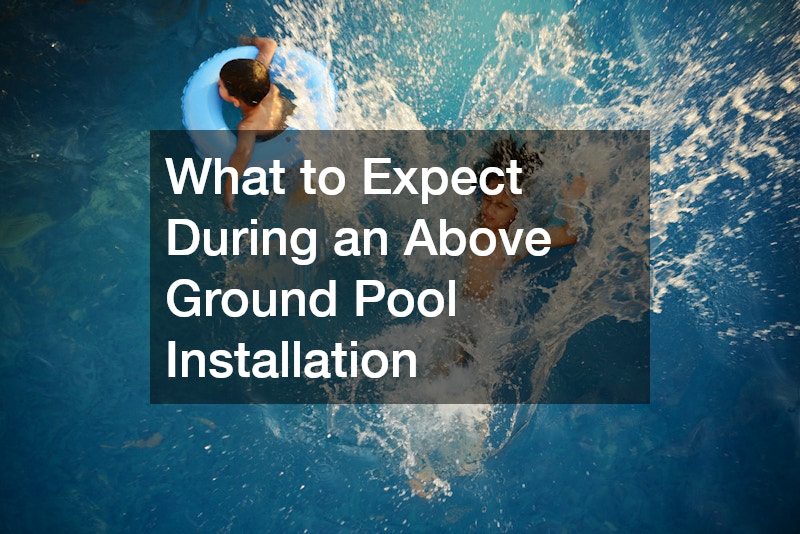Installing an above-ground pool can transform your backyard into a personal oasis, offering a perfect spot for relaxation and entertainment. Understanding the process beforehand is crucial to ensure a smooth and efficient installation, helping to avoid unexpected delays or complications. Preparation and planning play a vital role in achieving the desired outcomes and maximizing your pool experience.
Preparing Your Yard for Installation
Site Selection and Preparation
Choosing the right location for your pool is critical for both functionality and enjoyment. It’s important to select a spot with ample sunlight, as this can naturally warm the water and enhance the pool experience.
Additionally, proximity to utilities like electrical outlets and water sources can simplify ongoing maintenance and reduce installation complexities.
Ensuring proper ground leveling is another essential aspect of site preparation. Uneven ground can lead to structural issues and water level imbalances, making it imperative to address any inconsistencies during the initial preparation phase. Utilizing tools such as a laser level or water level can help achieve the desired flatness and stability.
Consideration of potential obstacles or hazards should also inform your site selection. Overhanging tree limbs or nearby structures might pose risks or impede access to sunlight and should be taken into account. This careful analysis not only enhances the pool’s safety but also contributes to a more aesthetically pleasing and enjoyable pool environment.
Permits and Legal Considerations
Before installation, it’s vital to understand and comply with local regulations and zoning laws regarding above-ground pools. Many municipalities require specific permits, which are designed to ensure safety standards are met and prevent potential legal issues down the line. Checking these requirements early can save time and prevent complications during the installation process.
Documentation such as property surveys may be necessary to meet legal requirements, especially if your pool borders another property. Acquiring the needed permits also involves inspections to verify that the pool setup adheres to local codes. This aspect of preparation ensures that the pool is safe for use and doesn’t infringe on property boundaries.
Familiarizing yourself with home insurance policy terms is another important factor when considering an above-ground pool. Many policies have specific clauses related to outdoor structures like pools, which could impact coverage and liability. Understanding these terms ensures comprehensive protection for both the property and its inhabitants.
The Installation Process
Step-by-step Installation Guide
The installation process begins with the delivery and unpacking of pool components. Organizing and inspecting the parts can prevent logistical hurdles and ensure all necessary tools are available before commencing assembly. This foundation sets the stage for a well-structured and timely installation process.
Following the layout instructions and assembling the pool frame is the next critical step. This phase often involves connecting wall sections, securing the liner, and installing support struts. Each step must be meticulously followed according to the manufacturer’s guidelines to guarantee structural integrity and performance.
Final checks involve ensuring all connections are secure and the pool is level and stable. Filling the pool with water is typically the last step, which also serves to test for any leaks or structural inconsistencies. These final evaluations help identify any issues before the pool becomes operational.
Common Installation Challenges
Several challenges can emerge during above ground pool installation, necessitating proactive measures and solutions. Uneven ground is a frequent obstacle that may require additional excavation or leveling tools. Addressing this issue is crucial as it can affect the pool’s structure and water distribution.
A lack of required tools can pose significant delays. It’s essential to have all necessary equipment, such as wrenches and screwdrivers, before beginning the installation to streamline the process. Maintaining a comprehensive toolkit helps avoid interruptions and ensures a smooth installation.
Weather conditions can also affect the installation timeline. Windy or wet conditions might hinder assembly and pose safety risks, suggesting that careful scheduling and weather monitoring are vital. Planning installation during favorable weather can mitigate these risks and enhance overall efficiency.
Maintaining Your Above-Ground Pool
Regular Maintenance Tasks
Routine maintenance is essential to keep your above-ground pool clean and operational. This includes tasks such as testing and balancing the water’s chemical levels, which helps prevent algae growth and maintain swimmer safety. Regular skimming of the water surface and cleaning the pool filter system are also crucial to sustain water clarity.
Inspecting the pool’s structural components, such as the liner and frame, can prevent costly repairs down the line. Spotting wear and tear early allows for timely interventions and prolongs the life of the pool. A steady maintenance schedule also contributes to an inviting swimming environment and enhances aesthetic appeal.
Seasonal Maintenance Considerations
Seasonal changes necessitate additional maintenance efforts to adapt to varying conditions. Closing the pool for winter often involves draining water below the skimmer level, cleaning debris, and applying a snug-fitting cover. This ensures the pool is safeguarded against freezing temperatures and winter weather.
Reopening the pool in spring requires cleaning, refilling, and chemical balancing after the dormant months. This process involves restoring systems that may have been shut down and ensuring that safety protocols are reestablished. Spring preparation also helps avoid the accumulation of dirt and debris that can result from neglect during the winter months.
Successfully installing an above-ground pool involves thorough preparation, an understanding of the installation process, and diligent maintenance practices. Addressing factors such as site preparation, legal compliance, and proper scheduling contributes to a seamless setup. By committing to regular and seasonal maintenance, pool owners can ensure lasting enjoyment, functionality, and aesthetic appeal of their investment.



